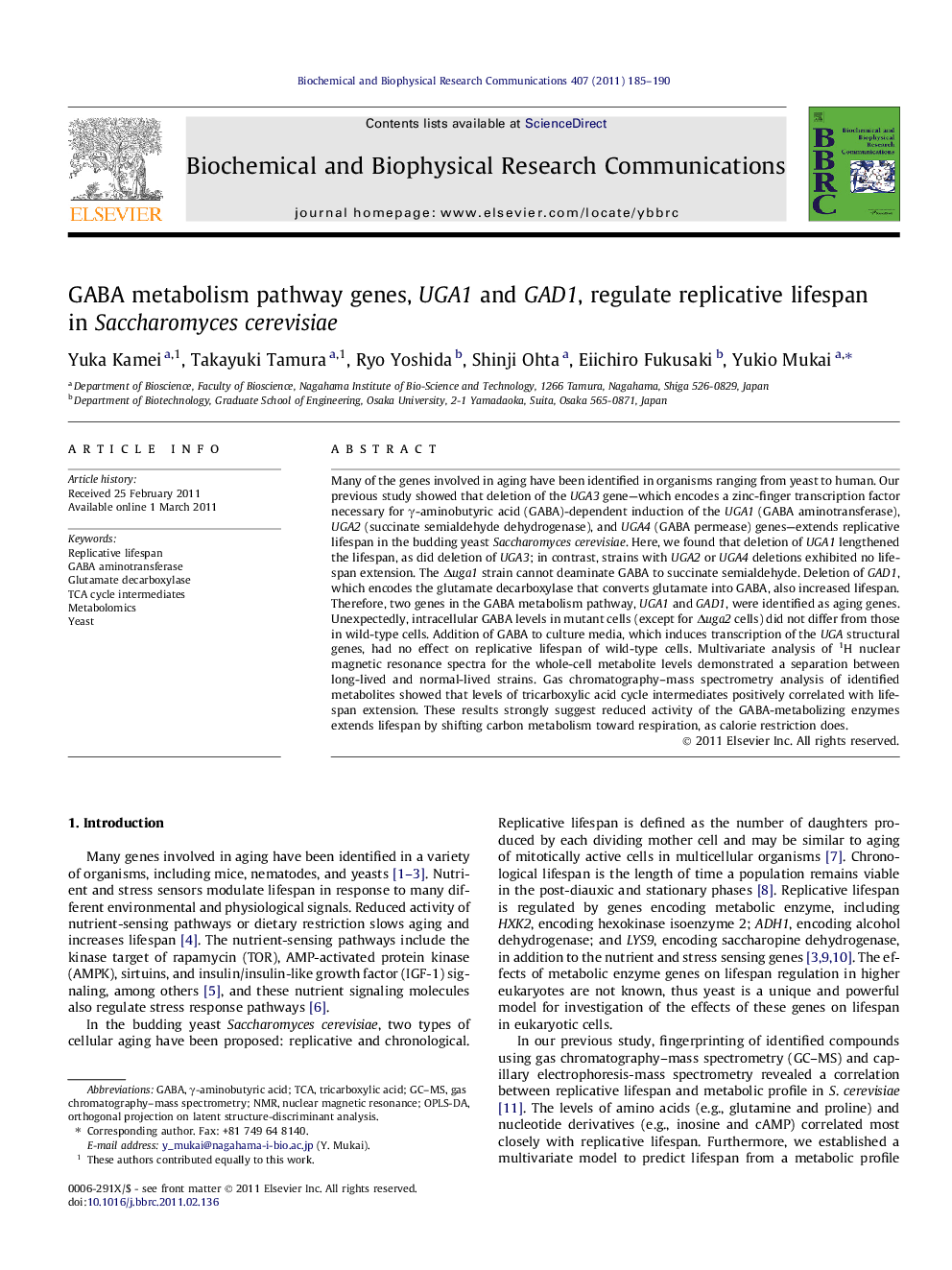| کد مقاله | کد نشریه | سال انتشار | مقاله انگلیسی | نسخه تمام متن |
|---|---|---|---|---|
| 1930875 | 1050532 | 2011 | 6 صفحه PDF | دانلود رایگان |

Many of the genes involved in aging have been identified in organisms ranging from yeast to human. Our previous study showed that deletion of the UGA3 gene—which encodes a zinc-finger transcription factor necessary for γ-aminobutyric acid (GABA)-dependent induction of the UGA1 (GABA aminotransferase), UGA2 (succinate semialdehyde dehydrogenase), and UGA4 (GABA permease) genes—extends replicative lifespan in the budding yeast Saccharomycescerevisiae. Here, we found that deletion of UGA1 lengthened the lifespan, as did deletion of UGA3; in contrast, strains with UGA2 or UGA4 deletions exhibited no lifespan extension. The Δuga1 strain cannot deaminate GABA to succinate semialdehyde. Deletion of GAD1, which encodes the glutamate decarboxylase that converts glutamate into GABA, also increased lifespan. Therefore, two genes in the GABA metabolism pathway, UGA1 and GAD1, were identified as aging genes. Unexpectedly, intracellular GABA levels in mutant cells (except for Δuga2 cells) did not differ from those in wild-type cells. Addition of GABA to culture media, which induces transcription of the UGA structural genes, had no effect on replicative lifespan of wild-type cells. Multivariate analysis of 1H nuclear magnetic resonance spectra for the whole-cell metabolite levels demonstrated a separation between long-lived and normal-lived strains. Gas chromatography–mass spectrometry analysis of identified metabolites showed that levels of tricarboxylic acid cycle intermediates positively correlated with lifespan extension. These results strongly suggest reduced activity of the GABA-metabolizing enzymes extends lifespan by shifting carbon metabolism toward respiration, as calorie restriction does.
► We demonstrate that two genes in the yeast GABA metabolism pathway affect aging.
► Deletion of the UGA1 or GAD1 genes extends replicative lifespan.
► Addition of GABA to wild-type cultures has no effect on lifespan.
► Intracellular GABA levels do not differ in longevity mutants and wild-type cells.
► Levels of tricarboxylic acid cycle intermediates positively correlate with lifespan.
Journal: Biochemical and Biophysical Research Communications - Volume 407, Issue 1, 1 April 2011, Pages 185–190